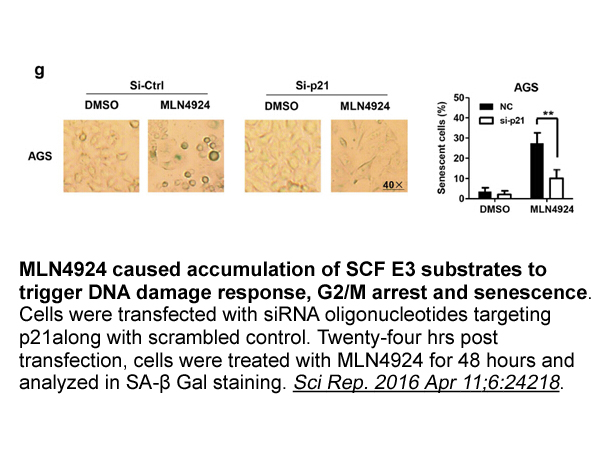Archives
br Roles for GMF in Endocytic
Roles for GMF in Endocytic Traffic
In addition to its roles in cell migration, GMF regulates actin-dependent endocytosis in yeast and mammals 13, 14, 50, and promotes the turnover of focal adhesions in immune Asiaticoside australia 42, 51. Vinculin, a central component of focal adhesions that anchors cells to their substrate, binds to the Arp2/3 complex at focal adhesions [52]. This raises the possibility that GMF helps stimulate the turnover and recycling of Vinculin–Arp complexes, or possibly facilitates other Arp2/3-dependent steps in focal adhesion dynamics. GMFγ has also been shown to localize to early and late endosomes in macrophages, where it is required for proper internalization and trafficking of the TLR4 receptor [50]. Together, these studies suggest that GMF regulates Arp2/3 complex-dependent functions in endocytic trafficking.
its roles in cell migration, GMF regulates actin-dependent endocytosis in yeast and mammals 13, 14, 50, and promotes the turnover of focal adhesions in immune Asiaticoside australia 42, 51. Vinculin, a central component of focal adhesions that anchors cells to their substrate, binds to the Arp2/3 complex at focal adhesions [52]. This raises the possibility that GMF helps stimulate the turnover and recycling of Vinculin–Arp complexes, or possibly facilitates other Arp2/3-dependent steps in focal adhesion dynamics. GMFγ has also been shown to localize to early and late endosomes in macrophages, where it is required for proper internalization and trafficking of the TLR4 receptor [50]. Together, these studies suggest that GMF regulates Arp2/3 complex-dependent functions in endocytic trafficking.
Open Questions about the Activity and Mechanism of GMF
To gain a more complete understanding of the regulatory effects of GMF on the Arp2/3 complex, further studies are needed to examine the precise biochemical role in of GMF promoting debranching, and its activities in the context of other actin-associated proteins. The debranching activity of GMF is likely influenced by whether the Arp2 and Arp3 subunits of the Arp2/3 complex are bound to ATP or ADP nucleotides. ATP hydrolysis and phosphate (Pi) release on Arp2 are thought to precede debranching [53], possibly leading to GMF targeting older branches while leaving younger branches intact. Consistent with this model, GMFγ preferentially binds the ADP–Arp2/3 complex over the ATP–Arp2/3 complex in solution [54]. GMF binding to the Arp2/3 complex may also catalyze Pi release on Arp2 and/or Arp3, similar to the stimulatory effects of cofilin on Pi release from F-actin [55].
Additionally, it will be important to determine the functions of GMF in the presence of cofilin and coronin, both of which have been implicated in debranching. Cofilin has been observed to stimulate debranching in TIRF microscopy assays [23], yet recent structural work indicates that GMF–Arp2 contacts are evolutionarily divergent from cofilin–actin contacts [30], and there is minimal evidence to suggest cofilin directly binds the Arp2/3 complex. Instead, binding of cofilin to actin at or near branch junctions may alter F-actin conformation [35] to weaken branch sites and catalyze daughter dissociation. Alternatively, cofilin debranching, as seen in TIRFM assays, may not reflect actual dissociation of the branch sites, but instead severing events located near branch junctions. Coronin also appears to have functions in debranching. Like GMF, coronin binds with high affinity to the Arp2/3 complex and alters Arp2/3 conformation and activities 32, 33, 56, 57, 58, 59. Further, coronin was recently shown to synergize with GMF in inhibiting Arp2/3-mediated actin nucleation [33]. Coronin also co-purifies with the Arp2/3 complex on GMF affinity columns [13], and recent structural evidence suggests that coronin and GMF have non-overlapping binding sites on the Arp2/3 complex [33]. Therefore, coronin and GMF may be capable of binding simultaneously to the Arp2/3 complex, and it will be important to test how they affect debranching in combination. Some genetic evidence has supported a collaboration between GMF and coronin (e.g., yeast gmf1Δcrn1Δ double mutants having synthetic growth defects) [27]. However, RNAi depletion of mammalian coronin-1B, which weakly stimulates debranching in vitro[22], shows opposite effects to GMFβ depletion [10], reducing instead of increasing lamellipodial persistence 22, 59. This might be explained by GMF and coronin having distinct, and only partially overlapping mechanistic roles in regulating actin networks, although the interpretation of these results could also be confounded by the ability of coronin to promote cofilin-mediated severing 24, 60. Lastly, it will be important to determine how the activities of GMF, cofilin, and coronin on actin network remodeling and turnover are affected by other binding partners of the Arp2/3 complex, particularly cortactin and Abp1, which are suggested to stabilize branches.